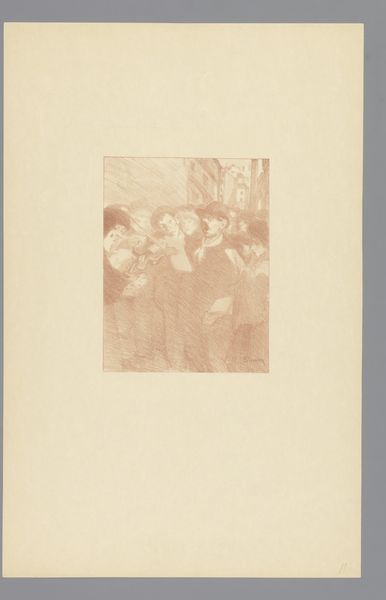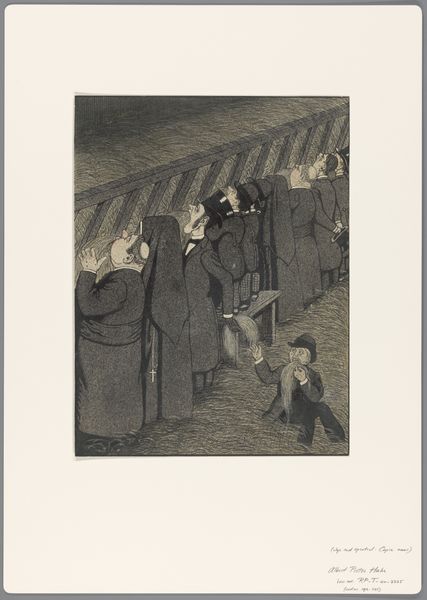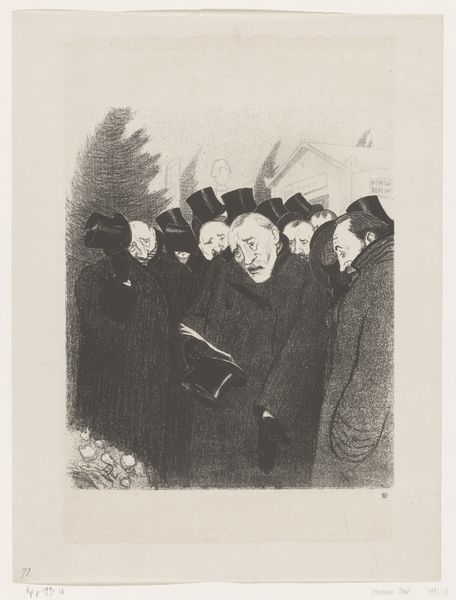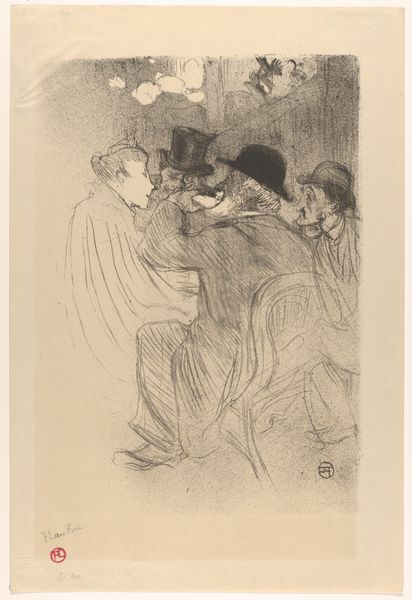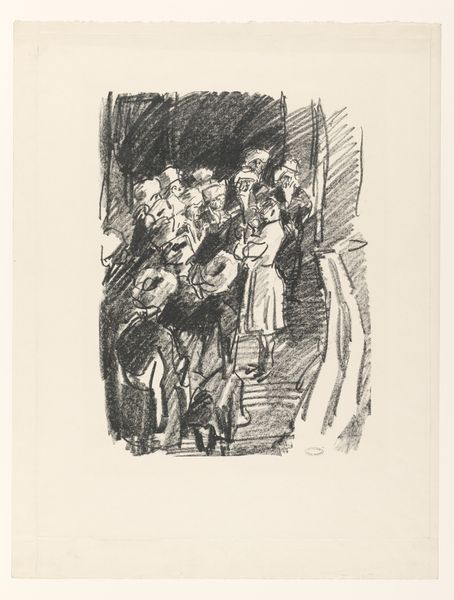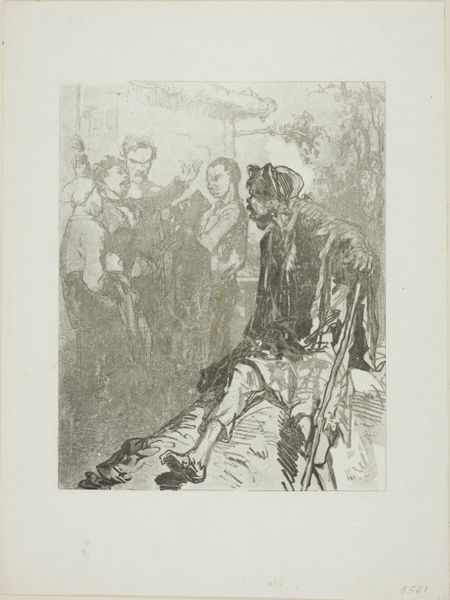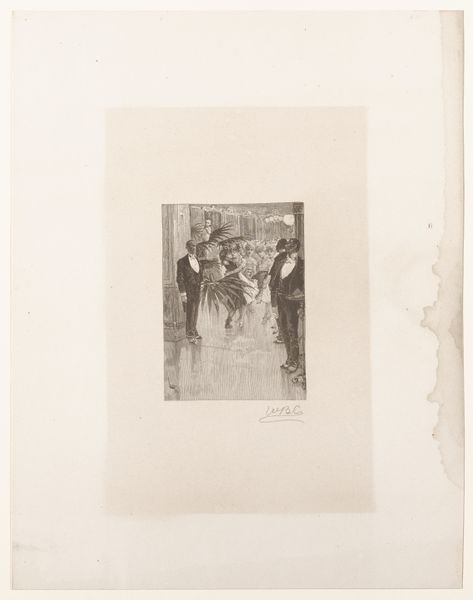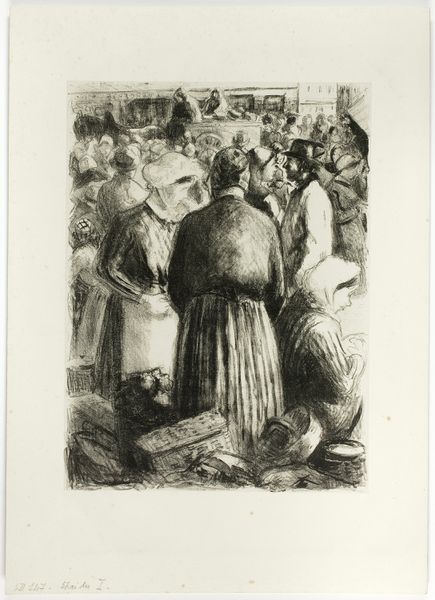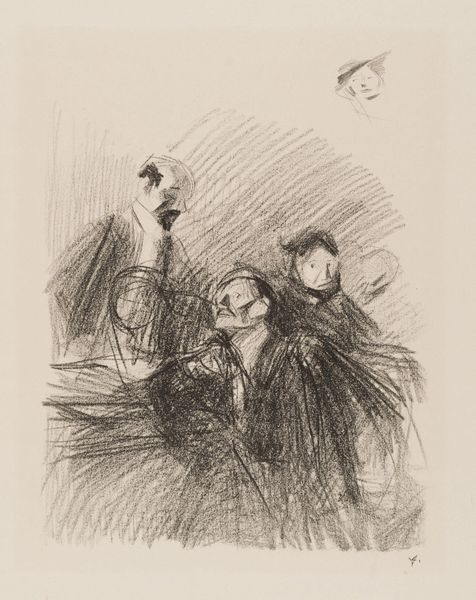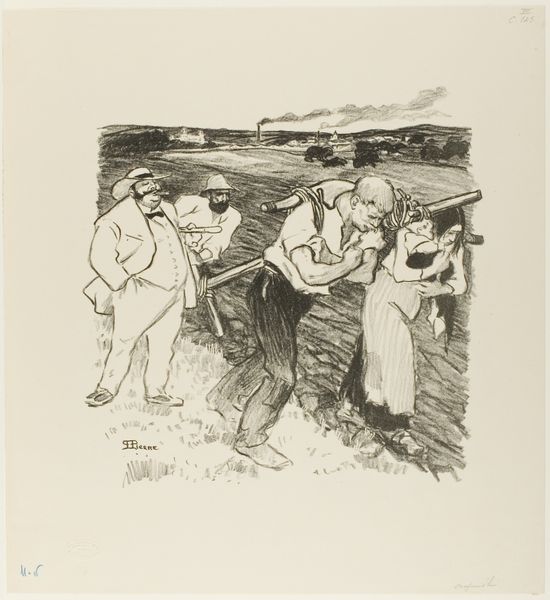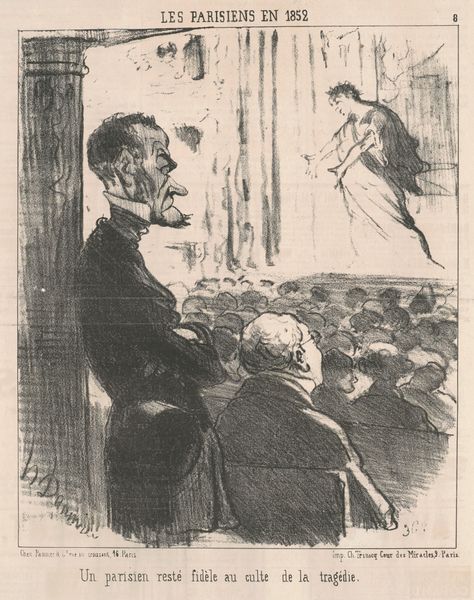
drawing, print, pencil
#
portrait
#
drawing
# print
#
group-portraits
#
pencil
#
symbolism
#
genre-painting
Dimensions: height 400 mm, width 289 mm
Copyright: Rijks Museum: Open Domain
Curator: This artwork is entitled "Mannen met fakkels in een optocht", which translates to "Men with torches in a procession," created by Rault in 1899 using pencil, print, and drawing techniques. Editor: There's something quite unsettling about the composition. The dark, smudged figures and those stark white torch flares… It's more somber than celebratory, isn’t it? Curator: Absolutely. Contextually, this piece reflects the period's anxieties. We’re on the cusp of the 20th century, with rising industrialization and societal shifts, possibly capturing a socialist demonstration or perhaps anxieties about the changing social order reflected in such public gatherings. The symbolism aligns with prevalent social and political undercurrents. Editor: From a formal standpoint, observe how Rault manipulates light and shadow to build depth. The faceless, almost spectral figures are clustered together, almost claustrophobic in their formation, drawing the eye to those few individual portraits—the crisp detailing accentuating the chaos. What is the statement Rault tries to convey? Curator: One could interpret the dark masses as emblematic of an anonymous working class, unified in purpose yet robbed of individual identity. Note the contrast between the individuals visible in the front against the undifferentiated mass behind. Editor: Indeed. The medium itself, pencil and print, speaks to accessibility, the ease of reproducing such imagery, which may imply it served a political purpose—disseminating an idea. Curator: Precisely! Analyzing the materials grounds it in the social and technological realities of the time, aligning with its potential political function. And Rault uses techniques to depict a realistic vision while hinting at symbolism through lighting. Editor: A chillingly effective snapshot of its era, made even more impactful by Rault's mastery of chiaroscuro in a seemingly simple medium. Curator: I agree; this detailed assessment provides deeper insight into late 19th-century anxieties as it embodies formal mastery.
Comments
No comments
Be the first to comment and join the conversation on the ultimate creative platform.
